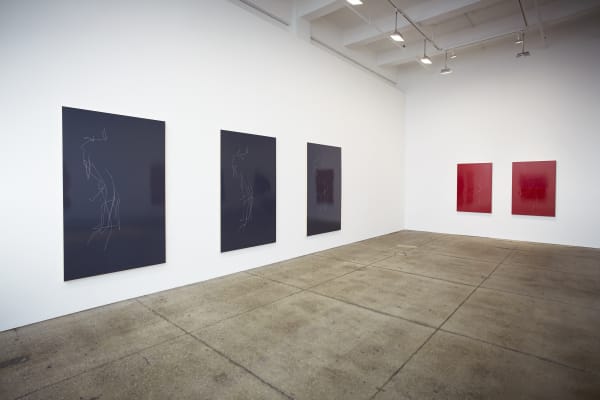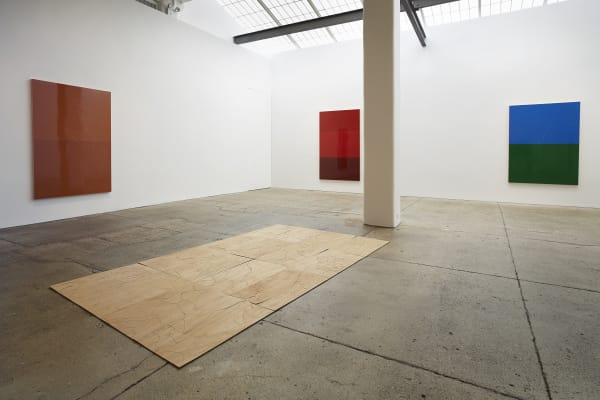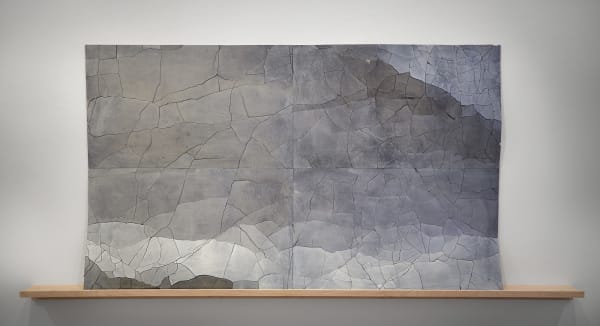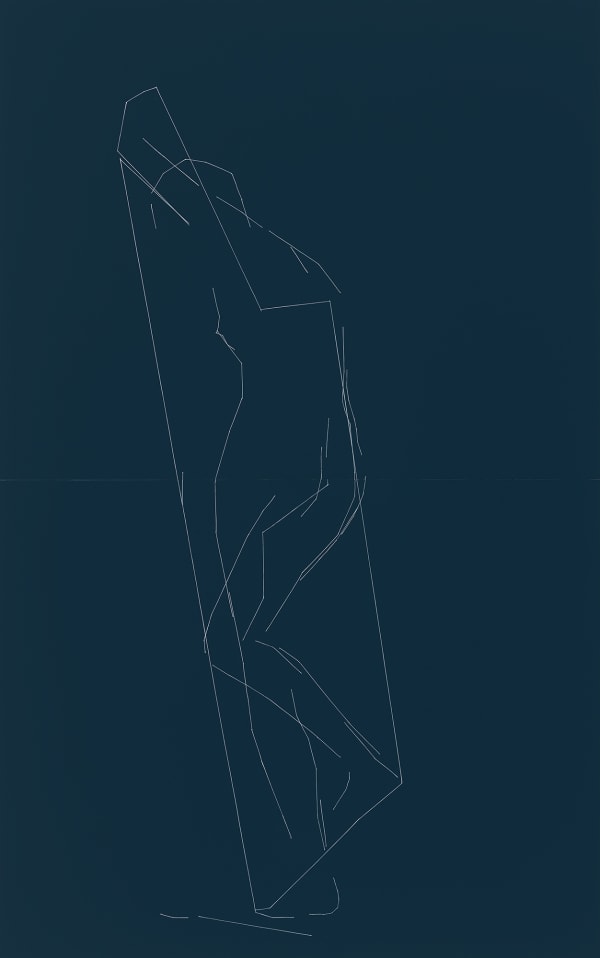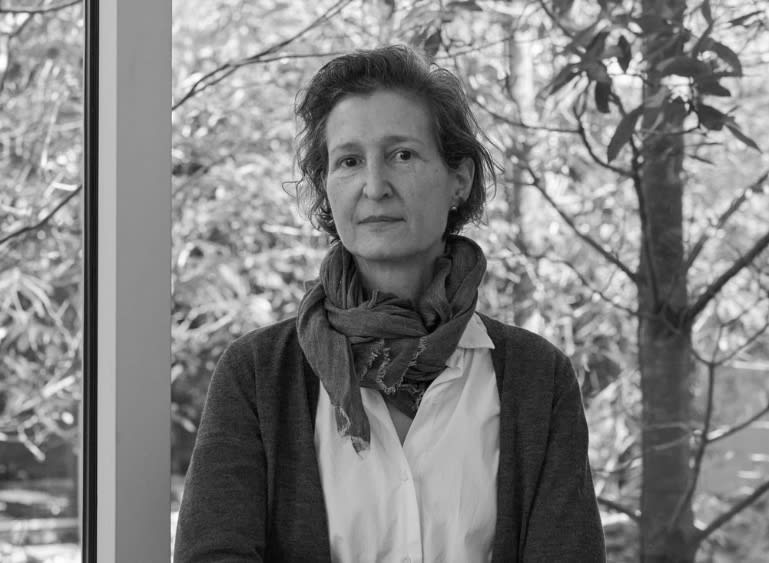Kate Shepherd: Fwd: The Telephone Game
-
Press Release
Kate Shepherd’s Fwd: The Telephone Game will inaugurate Galerie Lelong’s fall season with an exhibition of the artist’s most recent paintings. While remaining true to Shepherd’s signature use of delicate lines, spatial complexity, and color, this new body of work reveals a network of processes the artist used to arrive at a desired image. Though Shepherd has used 3D modeling software to create images for her forceful yet refined paintings over the last twelve years, her newest work more explicitly exposes a digitally generated line, making the computer process itself the subject of the work.
Shepherd begins her work in SketchUp to build three dimensional models. The image, derived from both existing and imaginary forms, develops from specific reference sources - an Alvar Aalto bent plywood chair and a variety of virtual 3D game nude models - for the works in this exhibition. Whereas a sculptor might make a drawing to depict form on a 2D plane, Shepherd creates her paintings by drawing virtual sculpture. The title of the exhibition, Fwd: The Telephone Game, conveys a playful way to express reusing, retelling, and mutations of original source material.
The development of one image by transforming another allows the drawing to take on a new meaning and is a salient and new process for Shepherd. Employing figures from computer gaming, Shepherd transforms a generic figure to one which points to the sensual and classical, including one from the Barcelona Pavilion. Shepherd has repeatedly redrawn the other muse, the bent plywood Aalto chair, designed to “hold” a body and is thus naturally curved, using the iconic Modernist shape to develop imaginary, human-scaled sculptures. In order to further expose her process, Shepherd has titled the work according to the actual file names which track an image’s evolution.
Shepherd’s works have previously utilized geometric patterns and configurations with which she built explicit spaces. While they are still in Shepherd's paintings, the lines now take on an abstract and renegade life. In reference to the old telephone game, where information is transmitted through multiple people often resulting in a distorted message by the end, Shepherd’s works are alienated from the original source. While one of these ingredients is the quirks of the computer
program itself, the other is the chain of human communication, ranging from visitors to the studio, fabricators, and daily e-conversations with a technical assistant based overseas. The works in Fwd: The Telephone Game continue upon Shepherd’s unique approach to painting. Threadlike lines of oil paint are applied on highly saturated layers of enamel, and joined wood panels, connoting the architecture for which the paint is meant, are the base of the paintings. This method results in a gleaming reflective surface which both allows the viewers to see their own reflections and also guards the intimate image from view. Fwd: The Telephone Game brings together over a dozen new paintings in a variety of scale.
As a long-time evolution of Shepherd’s “cracked” paintings, the artist has laid a 16-piece wood work on the gallery floor further articulating the content and source of the material. The cracks’ formations were redrawn from a walkway in Central Park at the “foot” of the statue of Christopher Columbus. The luan wood, meant for rough construction, was laser cut to the lines of the cement's cracks. To further show the organic nature of the work, some pieces naturally lift up while others stay flat, and the artist has left the wood unpainted.
The exhibition is accompanied by an intimate catalogue that includes works in the exhibition, visual references, dialogue between the artist and multiple individuals, and an introduction by the artist. The artist will be present for the opening on Friday, September 12 from 6-8pm.
Shepherd’s work is featured in numerous museum collections, including the Albright-Knox Art Gallery; Baltimore Museum of Art; Eli and Edythe Broad Art Museum; Detroit Institute of the Arts; Des Moines Art Center; Indianapolis Museum of Art; Los Angeles County Museum of Art; Museum of Fine Arts, Boston; Phillips Collection; Scottsdale Museum of Contemporary Art; and the Seattle Art Museum. In 2014 her work is included in several group exhibitions including: Reductive Minimalism at the University of Michigan Museum of Art, Ann Arbor, Michigan and Coloring at the Atlanta Contemporary Art Center, Atlanta, Georgia. Born in 1961 in New York City, the artist lives and works in New York City.
-
Installation Shots
-
Works
-
Artist
-
Publications




